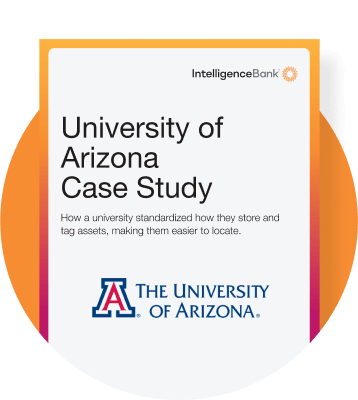Marketers in academia understand that adhering to higher education marketing compliance is as important as effectively reaching your audience. Keeping up and keeping within university marketing guidelines has become a top priority due to increasing changes within the sector. The gaze of governmental regulatory bodies has simply never been stronger.
For the most part, the shifting sands are a result of increased globalization, intensified competition and bigger ad budgets. They have combined to move higher education marketing compliance from a mere box to tick to a non-negotiable strategic imperative.
The thing is, without an efficient, watertight workflow system, compliance can be an onerous extra layer of complexity that slows down the process of getting brand and legally approved content out the door. There are no surprizes to hear that when that happens, opportunities are missed. On the other hand, when content is rushed out the door without correct approvals, the probability of mistakes increases exponentially. As we’ll discuss later, these mistakes can financially devastate not only your marketing budget but your institution.
It’s for this reason that we have produced the 2024 Higher Education Marketing Compliance Guide. It’s free to download and will help you understand current and future threats and trends, as well as operational solutions for university and higher education marketing teams.
The Basic Challenges Around Higher Education Marketing Compliance
It’s never been more challenging to create high-impact university education marketing while simultaneously balancing increasingly complex regulations. The hurdles facing higher education marketers are multifaceted. From maintaining brand integrity to consistently adhering to stringent regulatory frameworks, it can be a headache. The intricacies of marketing compliance in the higher education sector are set by various governmental bodies and regulatory authorities outlined in our guide. They span a huge range of areas such as consumer protection, accreditation standards, educational quality assurance, curriculum guidelines, and more. While you can read up on current trends and threats in our guide, here are some of the primary aspects surrounding financial and bank marketing complianceGlobalization of university marketing
Since 2020 and the online learning explosion, the geographical barriers to studying internationally have become less of an issue. The globalization of the higher education sector has brought about both opportunities and challenges for institutions worldwide. As universities expand their reach beyond national borders to attract students from diverse backgrounds, the need for effective marketing strategies has never been greater. However, alongside this expansion comes the heightened complexity of achieving and maintaining marketing compliance in a global context. One of the primary challenges that higher education marketers face is the need to navigate a patchwork of regulations and standards across different jurisdictions. As they target students from various countries, universities must ensure that their marketing efforts comply with the legal and regulatory frameworks of each region. This includes adhering to consumer protection laws, data privacy regulations, advertising standards, and accreditation requirements, among others. Additionally, what may be acceptable or effective marketing practices in one country, could be perceived as misleading or inappropriate in another. As such, universities must carefully tailor their marketing strategies to resonate with local audiences while staying compliant with relevant regulations. The increasing prevalence of digital marketing channels has also added a layer of complexity to maintaining marketing compliance. Social media and online advertising pose new challenges when it comes to ensuring that marketing activities are transparent.Changing accreditation rules
Higher education marketers constantly face the challenge of adapting to regulatory changes. One significant aspect that has greatly influenced this balance is the evolving accreditation rules. Accreditation serves as a quality assurance mechanism, ensuring that educational institutions meet certain standards of excellence in their programs and operations. However, as accreditation rules change, institutions must quickly adjust their practices to remain compliant. The impact of changing accreditation rules on marketing compliance cannot be overstated. As they dictate the information that institutions can include in their marketing materials, this can upend the alignment of content across a myriad of channels. Implementing changes to affected materials can be a living nightmare.Higher education marketing compliance reporting
Regulatory bodies may implement strict monitoring and reporting mechanisms to assess institutions’ compliance with standards. Higher education marketers must develop robust systems for tracking and documenting marketing activities to demonstrate adherence to accreditation guidelines.Transparent partnerships and associations
The need to showcase attractive partnerships and affiliations has become more pronounced due to intense competition among institutions. This has led to an increased demand from regulatory bodies for institutions to be accurate and transparent when it comes to the representation of associations. Failure to provide correct information erodes trust and credibility – the very pillars educational institutions seek to uphold. As well as that, it leads to scrutiny and possibly penalties from regulatory bodies such as the Department of Education (ED) and the Federal Trade Commission (FTC). Our guide explains real-life examples of the consequences.Accurate disclosure of course outcomes
The influx of new entrants into the higher education sector has brought with it the need for greater emphasis on accurate depictions of course outcomes such as career prospects, salaries and residency status. Higher education marketers are under increased pressure to ensure their content accurately reflects the current realities of the course. As our guide shows, embellishments and exaggerations that have been made in the sector have been met with profound ramifications from regulatory bodies.Aggressive recruitment strategies
While competition drives innovation, it can also drive some pretty high-pressure marketing and sales tactics in an effort to attract students. One key factor is the representation of fees. At best, some institutions have been found by regulatory bodies to be economical with the truth, and at worst completely deceptive. Students can be placed in severe and lasting financial hardship if fee schedules are not communicated accurately which is why government regulatory bodies have this issue high on their agendas. Higher education marketers must ensure that all costs associated with attendance are clearly outlined. In addition to misrepresentation of fees, some institutions have been found to breach higher education marketing compliance codes with intrusive and persistent cold-calling selling courses that may not be a good fit for their needs. Although a short-term gain may be made by shady operators, it is purely a matter of time until marketing compliance regulators initiate investigations.Why is Higher Education Marketing Compliance Becoming More Complex?
Why university marketing compliance rules are fluid
Changes to higher education marketing media budgets

Failure to uphold higher education marketing compliance rules
University and higher education marketers are not only dealing with students’ current funds, time and effort but also with their future careers and livelihoods. This is why governmental regulatory bodies take such a staunch position against any breaches in marketing compliance.
Whether you are a credible operator or a bootstrapping start-up, if you flout or make questionable interpretations of higher education marketing compliance rules there are crippling penalties. Honest mistakes and technical glitches are not much of a defence when it comes to breaking university marketing guidelines. Our guide shows current real-world examples of this. Punitive financial damages and suspensions can sometimes be the tip of the iceberg as ensuing reputational damage can often be a more difficult obstacle to overcome.
When a matrix of compliance regulation occurs at the same time as the blazingly fast pace of today’s content cycle, it’s only a matter of time before things fall through the cracks unless you have a coordinated centralized system of record.
How to control university marketing compliance
Our guide outlines more than up-to-date trends and frightening tales of severe penalties for stepping outside of marketing compliance law. It provides practical solutions and tools to help university marketers stay compliant and meet marketing objectives.
As the oversight and regulation of higher education marketing compliance advances, the solutions to effectively manage them must also evolve. Born out of necessity and technological innovation, cutting-edge marketing compliance workflow tools have emerged, enabling leaders in higher education marketing to not only ensure compliance but also enhance marketing effectiveness exponentially.
Marketing operations software significantly contributes to higher education’s capacity to manage the rapid pace and abundance of creative content, alongside the dynamic nature of compliance requirements. In short, it was designed to streamline the process of achieving and upholding marketing compliance.
While they serve various functions, marketing operations platforms primarily work by providing an end-to-end pathway for asset creation, centralizing approved brand assets for easy accessibility and sharing. Leveraging advanced AI and automation, these platforms streamline the incorporation of intricate legal requirements across numerous scenarios and seamlessly integrate them into editable creative templates.
Crucially for university marketers, these platforms offer comprehensive audit trails and robust reporting features, demonstrating transparency and accountability. This empowers marketers to showcase compliance with regulatory mandates to both internal stakeholders and regulatory bodies. They also facilitate tracking and scheduling of compliance checks for potentially non-compliant or at-risk content.
Although marketing compliance has brought about new challenges and complexities, it has also opened up opportunities for innovation. By using state-of-the-art marketing operations software, higher education marketers can enhance efficiency by automating countless manual tasks. This not only enables them to streamline compliance processes and mitigate risks but also allows them to dedicate more time to strategic, high-value endeavors. Despite the challenges posed by stringent regulations, higher education marketers are discovering more intelligent operational approaches that ultimately bolster the ROI of their organizations.

University Education Compliance Fails Don’t Have to Happen
For many in higher education marketing, compliance is not driven by a fear of knowing that every advertisement, every claim, and every promotion they run is scrutinized against a backdrop of evolving regulations. It’s more about integrity. Integrity is at the very core of the university education sector, so marketing compliance goes hand in hand with your industry. They are unlikely to need convincing when it comes to upholding marketing compliance law.
Because of this, a large part of the job for those charged with safeguarding university marketing compliance is to stay on top of emerging trends and tools.
Prevent financial penalties and safeguard your reputation by staying abreast of industry trends, engaging in ongoing training, actively communicating with regulatory bodies, collaborating with legal professionals, and implementing compliance software. This approach will enable you to uphold marketing regulations with assurance, fostering trust, strengthening your brand, and positioning yourself as a leader in the industry.
Access our guide to empower your team in achieving and sustaining regulatory compliance. Equip them to produce impactful, brand-aligned content that resonates with your audience and drives sustainable growth.





